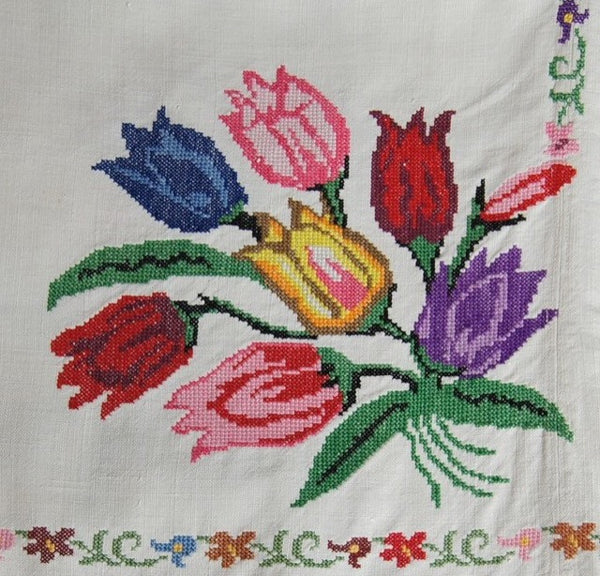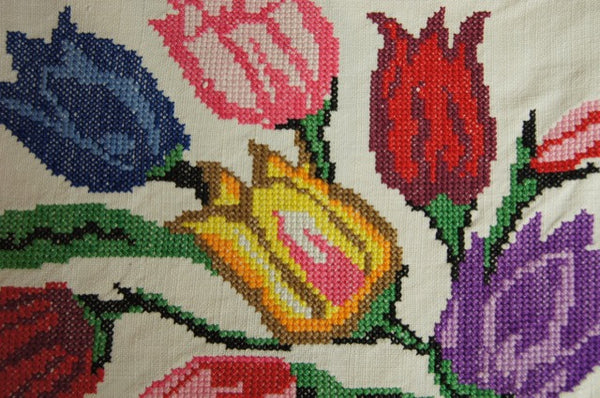This bright and beautiful 90” x 65” tablecloth has a cross-stitched floral pattern on hand-loomed linen. Festooned with colorful tulips, it has a six-inch long fringe on two ends. It’s as if springtime is emblazoned across this spectacular fabric, the embroidery designs the most valued of this period.
Cross Stitch Tulip Tablecloth
Flowers were and are ubiquitous symbols of beauty for stitchers historically and today. Nothing brightens an interior more than the bright floral patterns on so many of our vintage and antique embroidered pieces.
See Our Antique Textiles in Person
This is but one of many luxurious one-of-a-kind antiques we have in our Pensacola atelier, as we have row upon row of textiles that include everything from antique French heirloom linens and primitive Austro-Hungarian Empire textiles to Art Deco and Bohemian specimens—at last count two million one-of-a-kind linens of the finest quality.
If you see a beautiful specimen on this site that you would like to see in person and you cannot visit us but you are a regular at either Round Top or the High Point Market, we will happily bring it to one of these shows so you can see for yourself how remarkable it is. See our Calendar of Events page for fair dates and let us know if we can bring our sumptuousness to you.
Cross Stitch Has a Hey Day
During the evolution of embroidery, it was during the 1870s when counted cross stitch became a fascination. William Morris is credited with a resurgence in favor for freehand embroidery techniques during his push to popularize the Arts and Crafts Moment. His influence is still felt today, as patterns based upon his decorative art are published in books, passed from artisan to artisan digitally, and produced in kits. The earliest proof of cross stitch is said to be an ancient Peruvian running-stitch sampler dated between 200 to 500 A.D.; and scholars have noted that cross stitch spread throughout Europe as the Crusaders brought home embroidered textiles from the Middle Eastern countries they invaded.
Various types of embroidery were popular pastimes during the first half of the last century, including cutwork, crewel embroidery and needlepoint, but one of the most popular techniques, particularly during the 1920s, 1930s and 1940s, was cross stitch. World Wars I and II brought a significant decline for needlework, though those who still had some leisure time and a love of needlework would produce patriotic samplers. The country where cross stitch remained popular throughout each of these decades was Great Britain thanks to pre-stamped cross stitch kits. Modern-day resurgences have been noted during the 1960s and the 1980s, though anyone who enjoys this art-form would say it is alive and thriving today!


